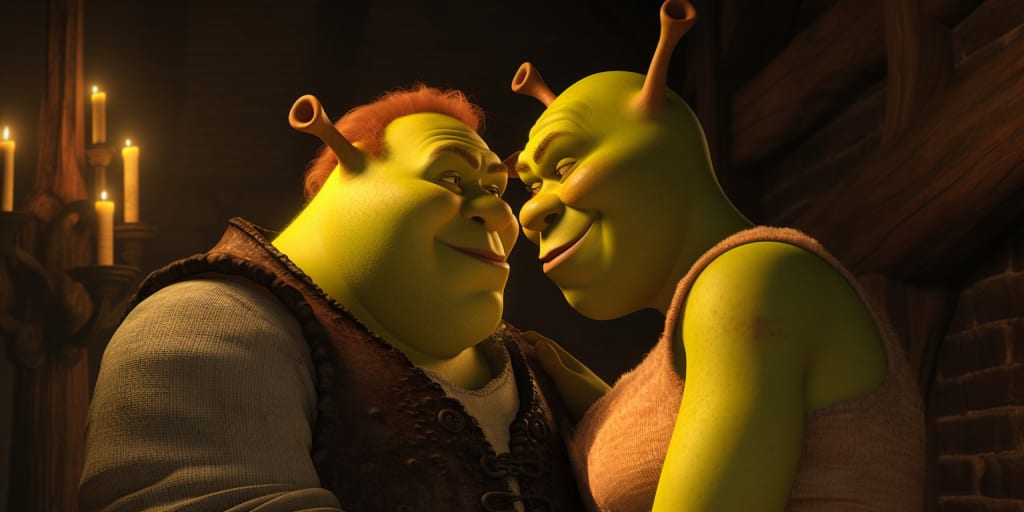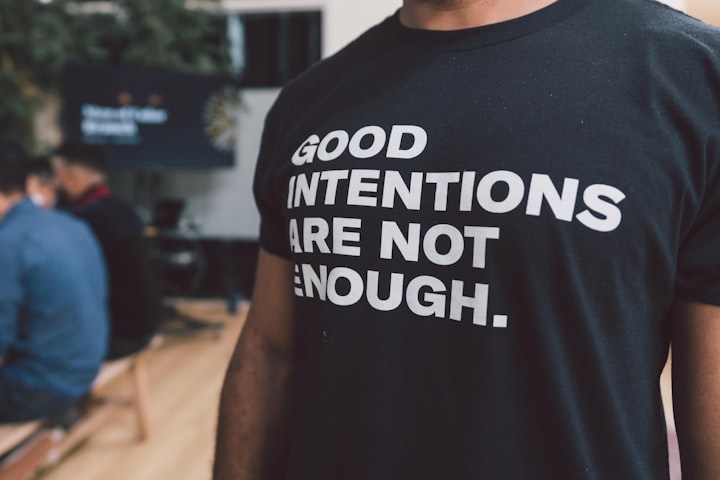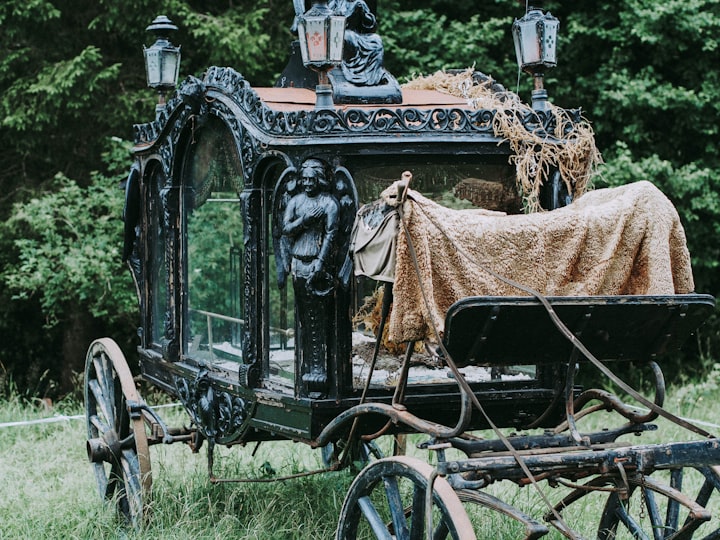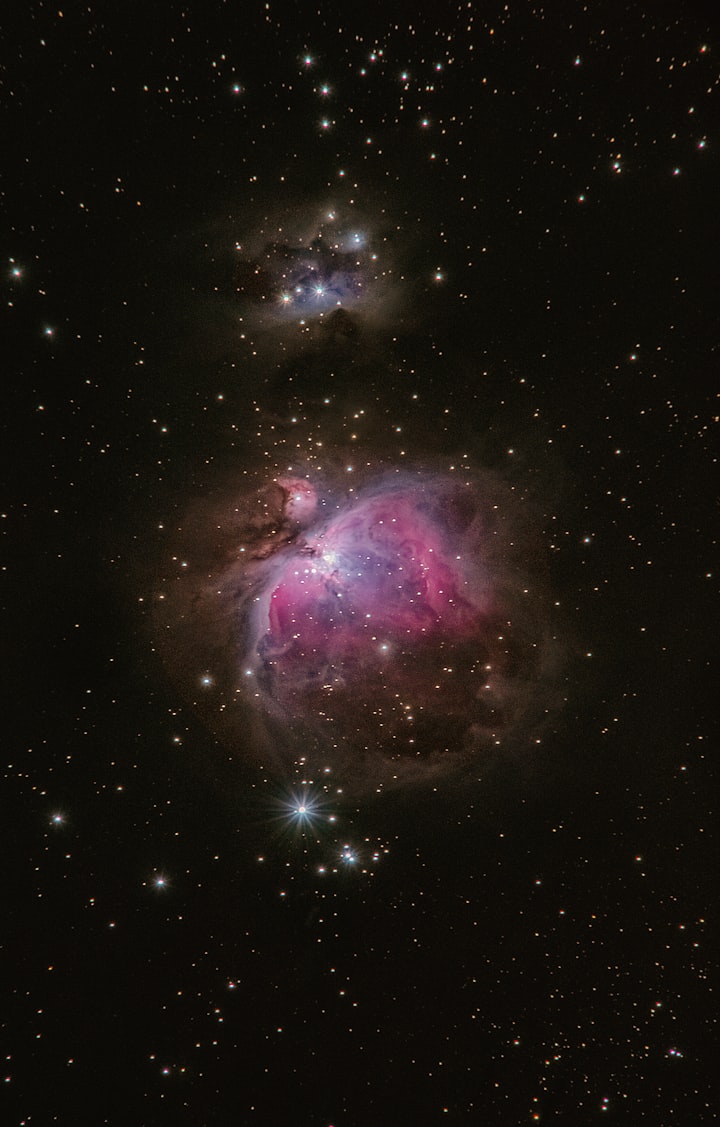Shrek: An Ogre-Sized, Unconventional Lesbian Love Tale
Picture this. You're settling down for a cozy evening of animated entertainment. You press play on Shrek, ready for a jaunt through fairytale nostalgia, but what if I told you there's a layer to this onion you may have missed?

Picture this. You're settling down for a cozy evening of animated entertainment. You press play on Shrek, ready for a jaunt through fairytale nostalgia, but what if I told you there's a layer to this onion you may have missed? You see, in the deep, dark corners of this delightfully absurd film, an unconventional love story emerges, featuring two closeted lesbians: Shrek, our resident he/him, and Fiona, our transformative high femme (Bennett, 2021).
History 101: He/Him and Femme Lesbians
Before we dissect our fairytale friends, let's hop into our time machines and journey back to the mid-20th century. Queer folk, far from enjoying the partial acceptance of today, existed on society's fringes. Butch and femme identities were born out of this social necessity, providing covert opportunities for same-sex attraction to flourish while seemingly conforming to heteronormative roles (Halberstam, 1998).
The butch identity, characterized by a display of masculine traits, found expression in women who often used he/him pronouns. He/him lesbians were and still are, a subculture within the lesbian community, challenging the boundaries of gender and sexuality. Their counterparts, femme lesbians, while embracing femininity in their presentation, were not to be mistaken as 'straight.' Their performance of femininity was a radical act of queering gender norms, subverting the expectations associated with their outward appearance (Halberstam, 2005).
Shrek : A Green Butch King Daddy Here to Slay
With this historical context in mind, let's revisit our beloved Ogre, Shrek. Shrek, with his gruff exterior and don't-give-a-damn attitude, shatters the archetype of the 'charming prince.' His consistent resistance against societal norms, his reluctance to conform to the traditional male hero archetype, and his emotional depth and sensitivity can be read as a queer critique of heteronormative behaviors (Bennett, 2021). Shrek could be interpreted as a he/him lesbian, a character whose masculinity is as integral to his identity as his female sexuality.
Princess Fiona's Coming Out Story
Now onto our princess in the tower, Fiona. Outwardly, Fiona embodies the quintessential princess stereotype - beautiful, helpless, waiting for her 'true love' to rescue her. But beneath the surface lies a complex character grappling with her identity (Halberstam, 2005). Fiona's transformation into an ogre mirrors the journey of coming out, the shedding of heteronormative constructs to embrace her true self. This transformation can be interpreted as Fiona's journey towards accepting herself as a femme lesbian, breaking free from the constraints of the heteronormative princess role.
The Compulsory Heterosexuality of Lord Farquaad
Let's not forget Lord Farquaad. His comically short stature coupled with his comically large castle, his ostentatious display of machismo, his fixation on marrying a princess to become a 'legitimate' king - all screams of overcompensation. His exaggerated masculinity and performative heterosexuality could be seen as a facade to conceal Fiona's lesbian identity, making him the perfect 'beard' in this queer reading of the narrative (Bennett, 2021).
From Swamps to Rainbow Flags
The Shrek series' enduring popularity within the LGBT community is no accident. There's a certain comfort in the familiar narrative of feeling 'different,' 'ugly,' or 'unlovable' and ultimately discovering acceptance and love (Bennett, 2021). Shrek, in his unabashed queerness, becomes an unlikely icon for the lesbian community, much like Cher to gay men. His journey of self-acceptance, his challenge to societal norms, and his 'otherness' resonate deeply with queer experiences.
Gay Ever After
Shrek isn't just a subversion of fairy tales; it's a radical reimagining of them. A 'happily ever after' isn't just for a prince and a princess. It can also be for a he/him lesbian ogre and a femme lesbian princess. This reading, although unexpected and unconventional, invites us to consider a broader understanding of representation and identity in our pop culture narratives. It's high time we lift the veil from our eyes and acknowledge the queerness that Shrek unabashedly embodies.
References
Bennett, J. (2021). Queer Coding in Animation: Shrek and the Subversive Narrative. Journal of Media Studies.
Halberstam, J. (1998). Female Masculinity. Duke University Press.
Halberstam, J. (2005). In a Queer Time and Place: Transgender Bodies, Subcultural Lives. New York University Press.






Comments
There are no comments for this story
Be the first to respond and start the conversation.